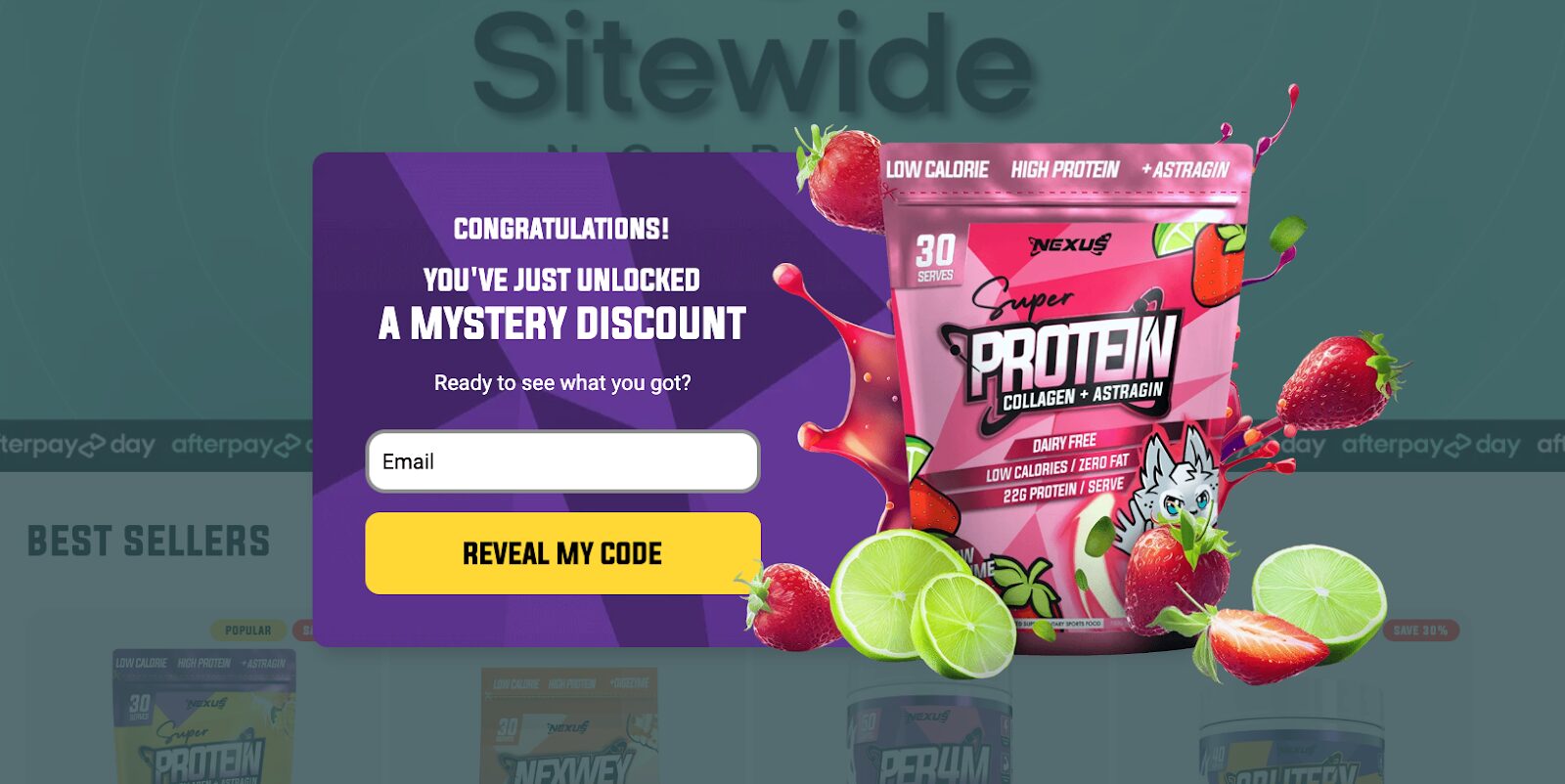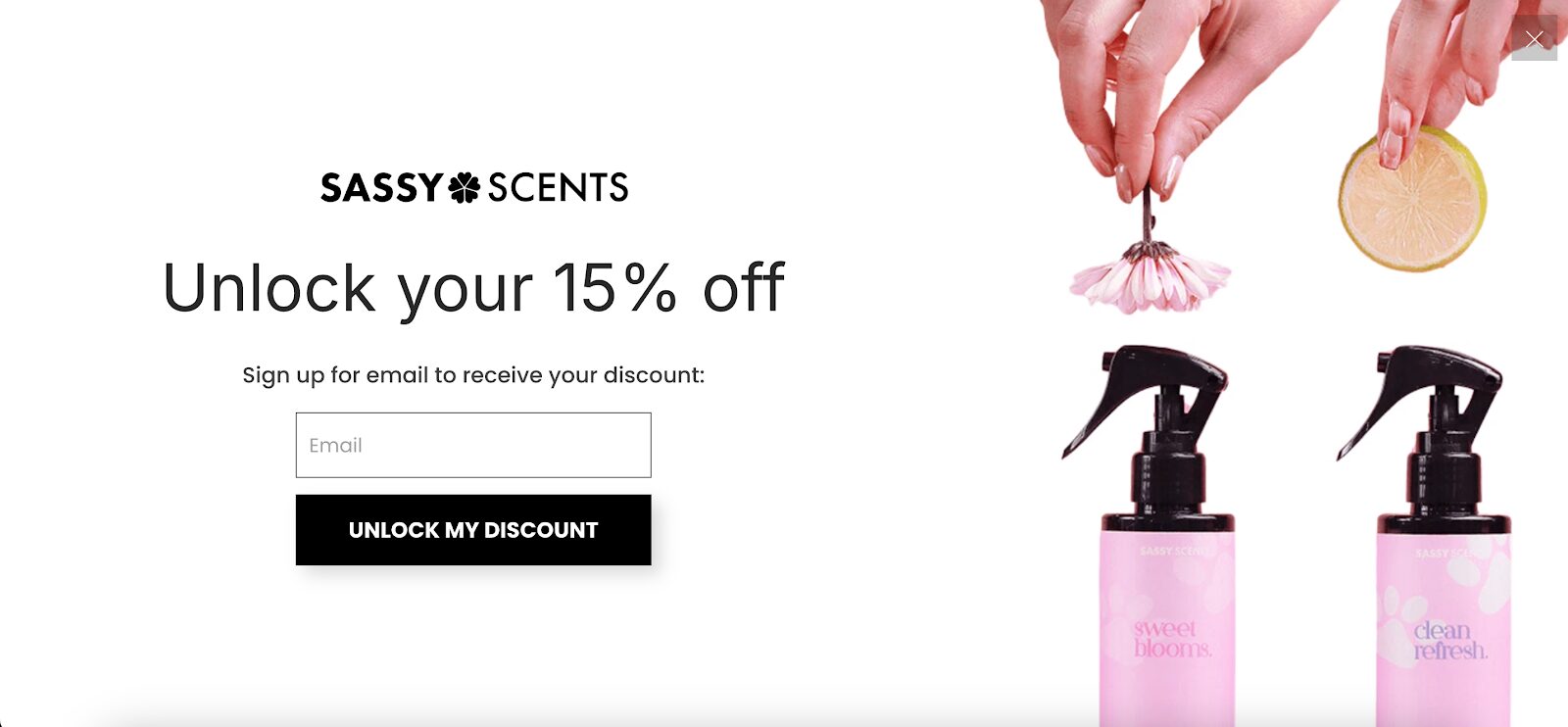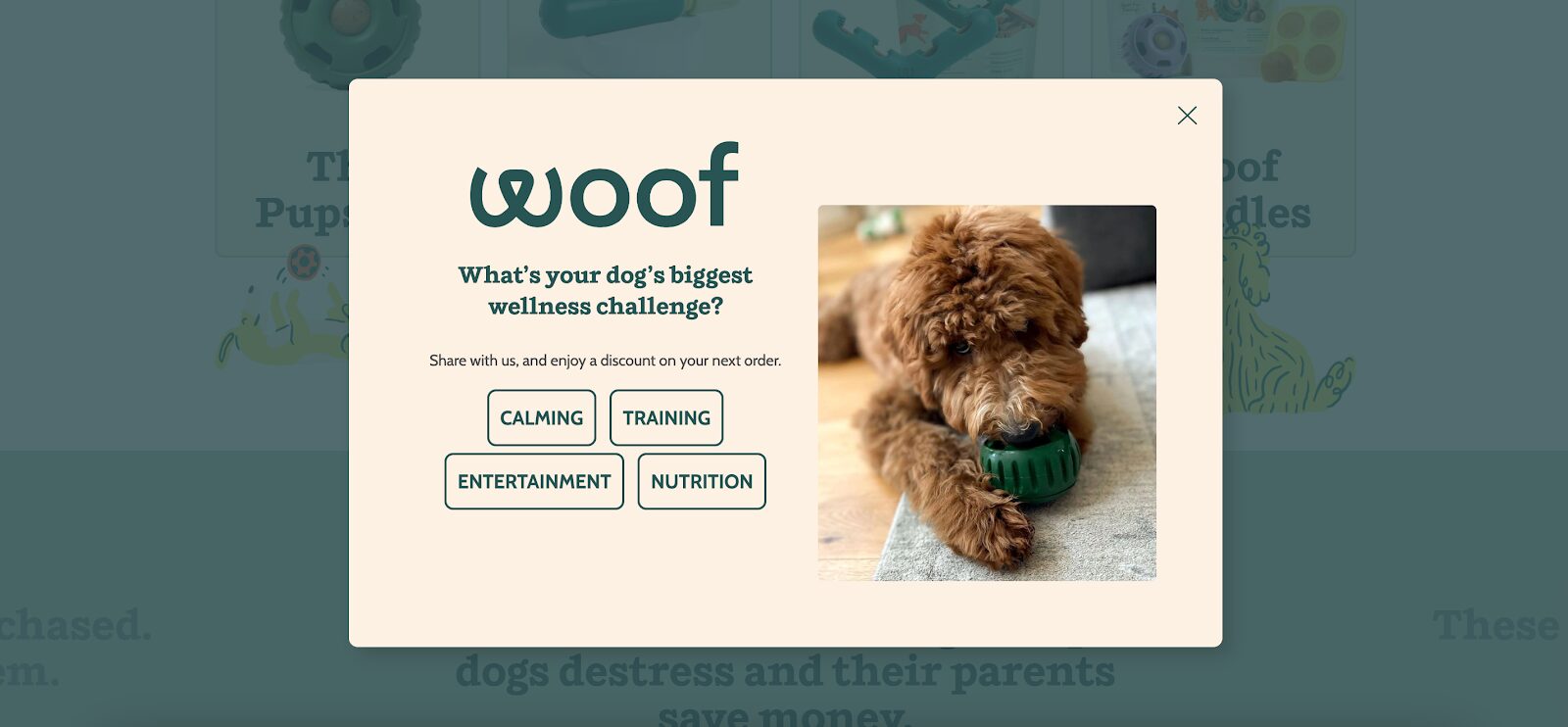- Blog
- 12 Effective Website Popup Ideas That Will Skyrocket Your Conversions
12 Effective Website Popup Ideas That Will Skyrocket Your Conversions
-
Barbara Bartucz
- Conversion
- 6 min read
Table of Contents
Struggling to get your website popups to convert? Looking for the secret sauce to make them truly effective?
Popups often get a bad reputation, but when done right, they can be powerful tools for boosting conversions.
In this article, we’ll walk you through 12 proven popup ideas that will not only engage your visitors but also supercharge your conversions.
Let’s jump in!
What are website popups?
Website popups are overlays that appear on a webpage based on user behavior. These pop-ups can serve various purposes, from collecting email addresses to promoting special offers.
The effectiveness of a website popup lies in its execution—how it’s designed, when it appears, and the message it delivers.
A well-designed website popup can significantly enhance user engagement and drive conversions by attracting attention, creating urgency, and targeting returning visitors.
12 creative website popup examples for different goals
Now that you understand what popups are, let’s dive into some real-world website popup examples to take a peek at how companies are using them to achieve specific goals.
Popup ideas to generate leads
Generating leads is crucial for any online business, and popups are goldmines for this purpose. The key is to offer something valuable in exchange for a visitor’s information.
A pop-up form is highly effective at converting website visitors into email subscribers due to its visibility and engagement potential.
1. The Turmeric Co.’s free resource

Offering a free resource like an eBook, guide, or template is a classic lead generation tactic. The Turmeric Co. successfully used this strategy by offering a lead magnet their audience found valuable (a healthy recipe book) in exchange for their email address.
Website visitors get useful content, and the company gets a potential customer—it’s a win-win.
2. Indigo’s newsletter sign-up

While everyone does newsletter sign-ups, Indigo sweetens the deal by offering a discount on the first purchase and access to exclusive sales.
This makes signing up a no-brainer. When you clearly communicate the benefits, you’re much more likely to see your subscriber count climb.
Popup ideas to promote discounts
Discounts are always appealing, especially when they’re presented in a way that creates urgency or intrigue.
Using a discount code in website pop-ups can effectively incentivize purchases and enhance user engagement by inviting potential customers to redeem exclusive offers as they navigate the site.
3. Vegetology’s limited-time offer

A sense of urgency can be a powerful motivator. Vegetology uses a limited-time offer popup to promote their “September special,” playing on the fear of missing out (FOMO).
This strategy is perfect for nudging hesitant shoppers to complete their purchases.
4. Nexus Nutrition’s mystery discount

Who doesn’t love a surprise?
Nexus Nutrition’s popup is a good example, as it uses mystery discounts to add an element of intrigue. Instead of stating the discount upfront, their website pop-up invites website visitors to click to reveal their special offer, making the experience interactive and engaging.
5. Sassy Scents’ first-time visitor discount


Sassy Scents makes a strong first impression by offering new visitors a 15% discount. They use a fullscreen website popup to ensure they catch visitors’ attention.
The multi-step popup design starts with a simple question, gradually building trust and encouraging visitors to share their email addresses.
This strategy is a smart way to convert first-time customers and establish a positive brand reputation.
6. Obvi’s Black Friday teaser campaign

Black Friday is a huge opportunity for ecommerce businesses, and Obvi capitalizes on the hype with teaser popups for their upcoming sale. This builds anticipation and keeps visitors coming back as they eagerly await the deals.
Popup ideas to increase engagement
Sometimes, the goal isn’t just to make a sale but instead to deepen engagement with your audience.
Check out these website pop-up examples, and how they get visitors engaged.
7. Woof’s interactive quiz

People love quizzes, especially when they deliver personalized results. Woof uses a popup to invite visitors to take an interactive quiz that leads to tailored product recommendations.
This approach engages users while gathering valuable data for future marketing efforts.
8. Kettle’s feedback form

Feedback is invaluable, but asking for it can be tricky. Kettle simplifies this by using a popup to present a quick, one-question survey. This not only engages visitors but also provides insights that can help the company improve their products and services.
Popup ideas to recover abandoned carts
Cart abandonment is a common challenge in ecommerce, but popups can help turn the tide.
Exit intent pop-ups, which appear when a user is about to leave a webpage, serve as a final reminder of offers and can effectively reduce cart abandonment by offering last-minute discounts.
9. The Turmeric Co.’s exit-intent pop-up

When a visitor is about to leave without completing a purchase, The Turmeric Co. uses an exit-intent popup to offer a last-minute discount.
Adding a countdown timer to this popup increases urgency, making it even more effective at driving conversions.
10. Parfume Lab’s cart reminder popup

Sometimes, a gentle nudge is all it takes to recover an abandoned cart. Parfume Lab uses a popup to remind visitors about the items they’ve left behind, encouraging them to complete their purchase.
Popup ideas to boost product discovery
Website popups can also be effective for helping visitors discover products they might not have found on their own.
Using popup templates can help create visually appealing, effective popups that engage visitors and boost product discovery.
11. Millie n Me’s personalized recommendations

Using data on user behavior, Millie n Me displays popups with personalized product recommendations. This approach not only helps users find items they might love but also boosts average order value by suggesting complementary products.
12. Goldelucks’ product recommendations

Similarly, Goldelucks shows personalized product recommendations in their popups. This strategy introduces customers to products they might not have discovered on their own, encouraging exploration and increasing the likelihood of additional purchases.
5 best practices for designing effective popups
While website pop-ups are powerful tools for capturing user information and promoting offers, they can backfire if not executed properly.
Here are some best practices to keep in mind:
1. Make your popups matter
Ensure your popup content is relevant to the user’s interests. Personalization based on browsing behavior or location increases engagement. If the offer aligns with what they’re already exploring, they’re more likely to take action.
2. Trigger popups at the right moment
Popup triggers are crucial for success. Use exit-intent popups when users are about to leave or trigger popups after they’ve spent some time on your site. Avoid interrupting users too early, which can feel intrusive.
3. Keep it simple and attractive
Your popup should be visually appealing but not overwhelming. Use a clean design, clear headlines, and concise messaging. Keep the focus on your offer and ensure the CTA stands out without overwhelming the user.
4. Make your CTA clear and compelling
A strong CTA encourages immediate action. Use concise, action-oriented phrases like “Get Started” or “Claim Now.” Make sure the CTA button is bold and visually distinct to draw attention.
5. Create mobile-friendly popups
With mobile browsing on the rise, it’s crucial to ensure your popups work well on all devices. Keep them simple, easy to close, and optimized for smaller screens. Remember that a poor mobile experience can drive users away.
FAQ
What are some popular tools for creating popups?
To create effective popups, tools like OptiMonk, Sumo, and Privy are popular choices.
- OptiMonk is known for its customizable popups with advanced targeting options, allowing you to create popups based on user behavior.
- Sumo integrates easily with most websites and offers simple, effective popups along with features like social sharing and email marketing.
- Privy is favored by ecommerce sites for its tailored popups, like cart savers and discount offers, with built-in analytics to track performance.
Is it a good idea to start using website popups?
Absolutely—if they’re executed properly. A website popup can significantly boost conversions by capturing attention and encouraging action. However, poorly designed or mistimed popups can frustrate users. Focus on delivering value through relevant, well-designed popups that enhance the user experience.
A good website popup can effectively capture leads and promote social media engagement, demonstrating how effective design and functional elements make all the difference.
How do I create a website popup?
Creating a website pop-up is easy with tools like OptiMonk. You’ll just need to:
- Create your free OptiMonk account.
- Design your popup using the drag-and-drop builder, focusing on clear messaging and a strong call-to-action.
- Set triggers and targeting based on user behavior (e.g., exit intent or time on page).
- Test and optimize using analytics to improve performance over time.
Wrapping up
When used strategically, website popups can be powerful tools for driving conversions, engaging website visitors, and boosting sales. From generating leads to recovering abandoned carts, the possibilities are endless. The key is to experiment with different popup ideas and closely monitor their impact.
Remember, the best popups are the ones that add value to the user experience while driving your business goals forward.
Create effective website popups with OptiMonk by signing up for a free account today!
Migration has never been easier
We made switching a no-brainer with our free, white-glove onboarding service so you can get started in the blink of an eye.

What should you do next?
Thanks for reading till the end. Here are 4 ways we can help you grow your business:
Boost conversions with proven use cases
Explore our Use Case Library, filled with actionable personalization examples and step-by-step guides to unlock your website's full potential. Check out Use Case Library
Create a free OptiMonk account
Create a free OptiMonk account and easily get started with popups and conversion rate optimization. Get OptiMonk free
Get advice from a CRO expert
Schedule a personalized discovery call with one of our experts to explore how OptiMonk can help you grow your business. Book a demo
Join our weekly newsletter
Real CRO insights & marketing tips. No fluff. Straight to your inbox. Subscribe now
Barbara Bartucz
- Posted in
- Conversion
Partner with us
- © OptiMonk. All rights reserved!
- Terms of Use
- Privacy Policy
- Cookie Policy
Product updates: January Release 2025








